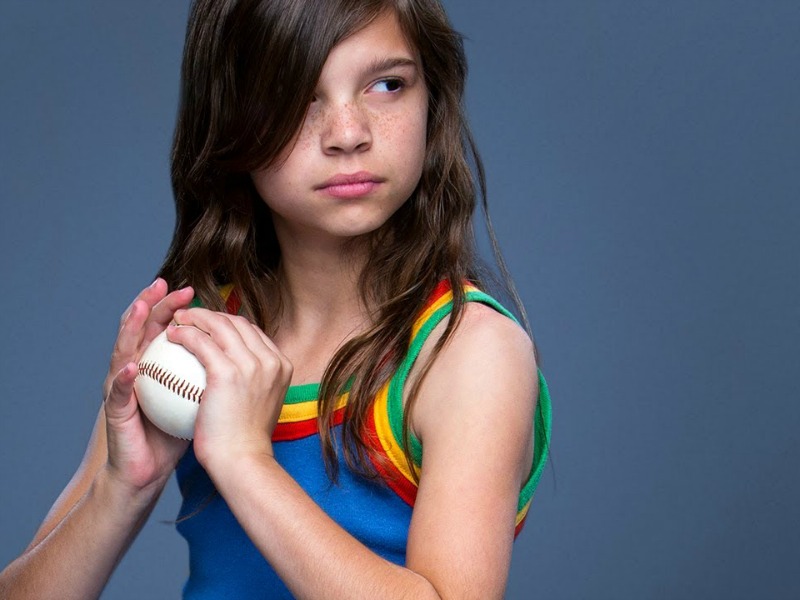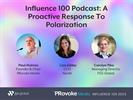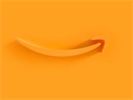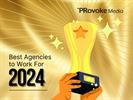Paul Holmes 18 Dec 2019 // 1:07PM GMT

The people have had their say, now it's our turn. Or maybe it's my turn. These are my picks for the top 10 Campaigns of the Decade, selected from among around 40,000 entries into our various SABRE Awards competitions over the past 10 years.
1. Always #LikeAGirl: Turning an Insult into a Confidence Movement—P&G Always Brand with MSLGROUP
Wherever the idea for the #LikeAGirl campaign originated—and like a lot of great ideas, there are plenty of people willing to take credit—it was a perfect fit for the Always brand, and it was probably the most successful of all the campaigns on this list in doing what great public relations is supposed to do: building a lasting relationship between the brand and the consumers it is designed to serve. One suspects that there are young women all around the world who will be loyal to Always for the rest of their lives because of the way this campaign—stirring imagery in particular—resonated with them. This was a truly global campaign, and perhaps the most powerful example of the decade’s dominant trend: purpose-driven brands.
2. CVS Quits Campaign: Repositioning a Leader in Health Care—CVS Health with Edelman
Great public relations is about what you do, not what you say, and so for me this was the smartest public relations play of the decade: a decision that saw pharmacy giant CVS eliminate tobacco sales in order to reinforce its positioning as a healthcare brand. In hindsight, it makes perfect sense—how can you be in the health business and sell cigarettes?—but it was a decision that certainly cost the company money in the short term in order to be true to the mission, which is one of the things that elevates it the upper reaches of my list.
3. #toocoolforplastics—Iceland with Weber Shandwick
Another campaign that was rooted in a significant (and potentially costly) behaviour change, UK supermarket Iceland made a commitment to eliminate plastic packaging by 2023. It was a bold move, and the fact that it came from Iceland—a brand previously known for celebrity-driven advertising and a low-cost positioning—made it doubly impactful. The company followed up a year later with a creative advertising Christmas advertising campaign—in partnership with Greenpeace—whose message of environmental protection was shamefully deemed “too political” to air on British TV.
4. "Born Again" Simulator—The Norwegian Agency of Development Cooperation (Norad) with Gambit Hill+Knowlton Strategies
There has been a lot of good work out of the public sector in the past decade, with a public interest mission and a behaviour change outcome. The thing that stood out bout the Born Again Simulator—one of a wave of campaigns designed to encourage greater understanding of different cultures—was the way it used technology to make the issues faced by people in developing nations real to the population of a more developed market. Using a digital “simulator” to enable Norwegians to understand what their lives might have been like had they been born in different parts of the world, it delivered not just information but an experience.
5. Lifebuoy School of 5 Hand Washing Campaign—Unilever Kenya with Apex Porter Novelli
Some great campaigns involve organizations changing their own behavior, but it can be just as powerful to change the behavior of the target population, and that’s what Unilever’s hand soap brand Lifebuouy did with this life-saving African campaign. Kenya loses 30,000 children every year to diarrhoea and respiratory infections, many of which can be prevented by the simple act of handwashing with soap. Working closely with public health groups in Africa, this campaign drove real behavior change and shifted perceptions of Lifebuoy (seen in the northern hemisphere as a brand for working men) as one of Unilever’s many purpose-driven brands.
6. REI #OptOutside—REI with Edelman
Like the same agency’s work for CVS, this saw the outdoor outfitter involved changing its behavior and making a sacrifice—with the additional benefit that it started a movement. “OptOutside” turned America’s busiest shopping day into a holiday for REI employees and persuaded customers to join them in the great outdoors on Black Friday—rather than going shopping.
7. The Launch of Shwopping—M&S with Unity
Maybe it’s because retailers are particularly close to their customers, and so they have an intimate understanding of what matters to consumers, but M&S is the fourth retail giant on this list. The “shwopping” campaign—which saw the cipermarket take ownership of a trend for “recycling” clothing, encouraging consumers to donate their unneeded items to benefit the charity Oxfam. Since the campaign’s launch, M&S has collected more than 20 million items worth an estimated £16 million.
8. Sinopec’s HK Plastic Pellets Crisis Management—Sinopec with Brunswick Group
Surely there should be room on this list for a textbook crisis communications effort. At a time when many western companies seem intent on ducking responsibility when things go wrong, Chinese oil and chemicals giant Sinopec was swift to take ownership of the issue when plastic pellets started washing up on the Hong Kong coastline after Typhoon Vicente, setting aside $1.28 million for a high-profile clean up effort that ensured it emerged with its reputation enhanced rather than ruined.
9. „Mein Kampf – gegen Rechts“—Gesicht Zeigen! Für ein weltoffenes Deutschland e.V. with Ogilvy Public Relations GmbH
Some of the most impactful PR efforts of the past decade have not relied on carefully thought-out strategy but on opportunism, and the ability to react in real-time to unexpected events. After the decision that Hitler’s Mein Kampf could once again be published in Germany, the nonprofit Gesicht Zeigen quickly developed and published “Mein Kampf – gegen Rechts,“ a book that tells the true stories of 11 people who are fighting against rightwing violence in modern journey, a brilliant example of “newsjacking.”
10. Protect her Wings!—MSD Romania with Rogalski Damaschin Public Relations
A Romanian campaign to persuade women to get tested for cervical cancer and raise awareness of the HPV vaccine, “Protect Her Wings” combined gorgeous creative with real impact—both behavior and policy change. Before the campaign, just 2.5% of the eligible population received vaccinations and three out of four women had never heard about the HPV vaccine. By the end of the campaign, more than half of women had been tested in the past three years and almost two-thirds were aware.


































.jpg)































